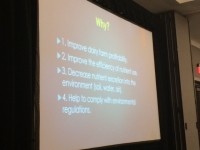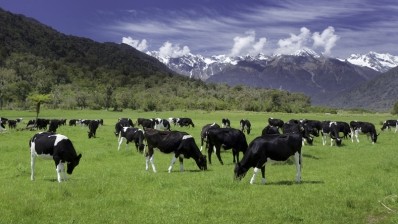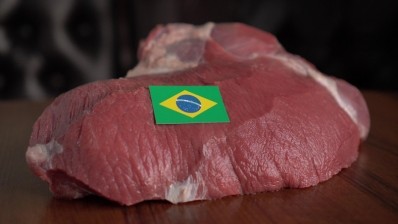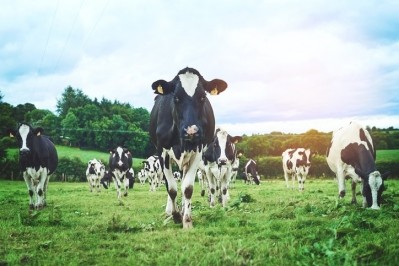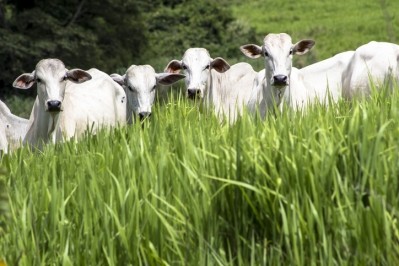'Precision nutrition approach can lower feed costs and make dairy farming more sustainable'
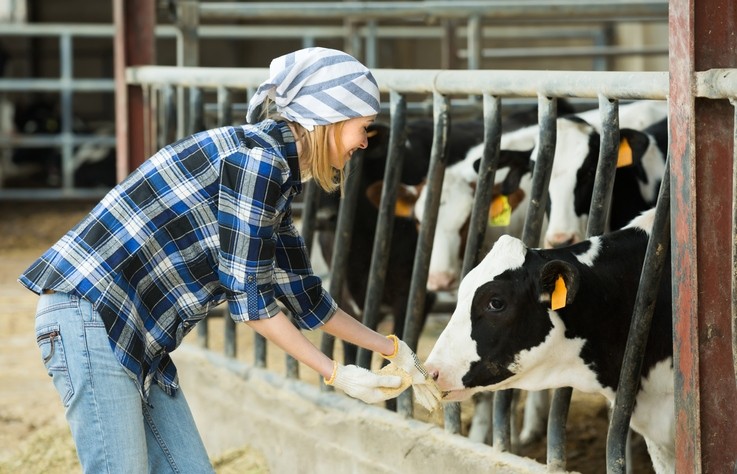
We caught with Larry Chase, professor emeritus in the department of animal science at Cornell University, at last week’s Cornell Nutrition Conference for Feed Manufacturers in New York to hear more about the precision nutrition work he has been doing with dairy producers in the state.
One goal of precision nutrition work is to formulate diets that come as close to the needs of the cow while supporting milk production as possible.
“In simple terms, if you have a nutrient requirement for 100 units of something how close can we feed to 100 and be comfortable that we’re meeting the needs of the cow?” Chase said.
“Quite often we feed above 100 because of the viability – if we have to feed 110 instead of 100 if we can go from 110 to 105 that’s good progress,” he told us. “That’s all we’re talking about – how close can we feed to the exact amount.”
The effort looks to reduce the “overage” or buffer that might be added into the diet to support cows without altering overall production, he said. “In some herds, you can do it a lot more than others – if they’re more consistent in their day-to-day management then we can be tighter,” he added.
Currently, the focus is on nitrogen, phosphorous and ammonia, he said, adding and, “now we’ve got a research project on methane emissions.”
The methane production done with the US Department of Agriculture is related to climate change and the greenhouse gases generated by dairy cows, said Chase. “We’re working using computer models to predict methane and we’re making adjustments in normal ration ingredients and proportions,” he added.
Addressing feed, performance needs, environmental element
Interests for supporting the ongoing research into work to reduce the levels of several nutrients included in dairy cow diets include reducing nutrient and greenhouse gas emissions, improving farm profitability and a state push for improved nutrient management, said Chase.
“What we’re trying to do is make the animal use the nutrients more efficiently, reduce the amount of nutrients or gasses emitted into the environment,” he said. The efforts also can improve profitability at the farm level by helping to cut feed costs, he added.
“It’s a win-win situation – the dairyman wins because he is feeding close to requirement, buying less purchased feed and improving profitability,” he said. “From society, the win is not putting as many nutrients or gasses into the environment from that farm or those animals. Both sides can sort of win on this one.”
The group has put together tools that can be used at the farm level to examine nutrient input levels and determine benchmarks for different nutrients, he said in his talk.
For example, if the amount of crude protein in a cow’s diet can be dropped by one unit, there is a reduction in the nitrogen excreted in mature of 27.5 pounds, per cow per year – for a cow generating 70 pounds of milk with an average dry matter intake of 47 pounds a day, said Chase.
An initial step in the effort is getting a producer and the feed designer at a facility to buy-in to the effort, he said. “If every cow in the state did that – that’s 17.1m less pounds of nitrogen,” he added.
“The other thing is we have to determine the amount of variability that exists day-to-day in the feeding program and then we also have to assess what level of risk they’re willing t assume, because there’s always a little bit of risk when you start making changes,” he told us. “Some are willing to take risks and some aren’t, and all of those taken together tell us how hard to push.”
The variation in question relates to how the total mixed ration (TMR) is combined and how the facility is managed, he said.
“Theoretically, if the cow got the same exact feed everyday consistently then you could be really, really close to the target [but] it’s very difficult on a farm with all the different things that happen everyday.”
Although the efforts thus far have been focused on working to redesign diets for producers in New York, the process could be adapted for producers in other areas as well, said Chase. One goal of the presentation was to share results and encourage interest in other locations.
“We’re hoping that other people see the results and say I’d like to try some of this – yes once we show them the profitability it might get their interest,” he said. “They should go home and look at the herds they work with to see if there are opportunities to make some small adjustments.”
The on-farm picture
In a recent three-year project through the Cornell Cooperative Extension of Delaware County, the group worked with several dairy producers in the Upper Susquehanna watershed, Chase said in his presentation. The effort included with several farms to address lowering crude protein levels in the cows’ diets.
On average, for the eight farms reported on, the in-feed crude protein levels for the farms was reduced by 1.7%, while the amount of nitrogen excreted in the manure dropped by 14%, he said.
The average bump to income of total feed cost was about $147 per cow per year and the income compared to purchased feed cost saw an average boost of about $158 per cow per year.

